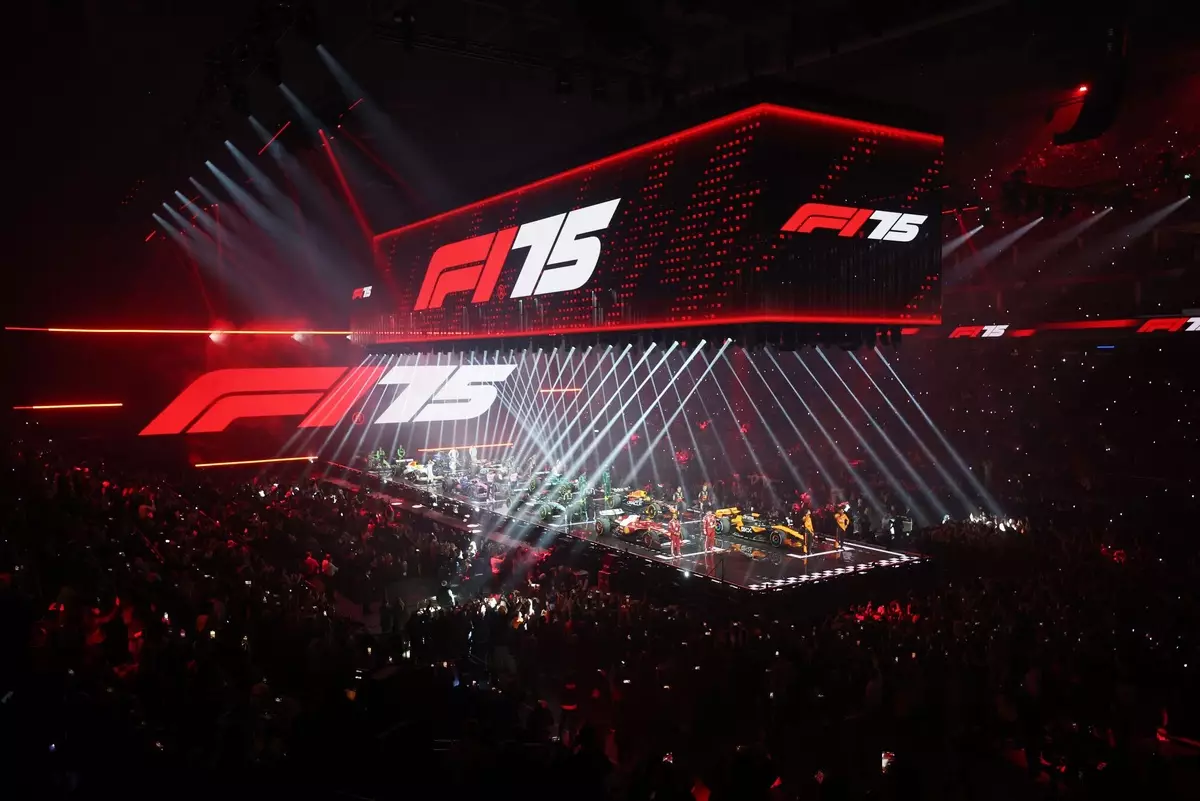The recent unveiling of the F175 livery at London’s O2 Arena revealed more than just the sleek designs of the 2025 Formula 1 cars. It served as a cultural commentary on the sport’s evolution and its future engagement with an increasingly diverse audience. Amid cheers for familiar faces like Lewis Hamilton and jeers for figures such as Christian Horner and Max Verstappen, the event highlighted the contrasting perceptions between long-time purists and the new generation of racing fans.
One striking aspect of the event was the comment made by host Jack Whitehall, who slyly acknowledged the discomfort of traditional Formula 1 aficionados with the spectacle. Indeed, as the stakes of brand presentation and viewer engagement grow, some purists were left groaning at the extravagant showcase. The financial investment for a mere seven-minute presentation — reportedly around £800,000 for Red Bull alone — sparked criticism among teams, who were anxious about how these lavish displays might detract from the core of the racing spectacle.
Nevertheless, it’s essential to recognize that the event was never meant to cater solely to die-hard fans. Formula 1 has made a conscious effort to broaden its reach, demonstrating its intention to appeal to a fresh audience unfamiliar with the intricacies of the sport. The successful turnout, with thousands of fans eager to witness their heroes debuting new cars, undeniably underlines the event’s effectiveness in reaching a broader demographic.
While Hamilton commanded attention as the first public face of Ferrari’s latest offering, the night belonged to the fans who reveled in the celebratory atmosphere. The positively received McLaren presentation was indicative of the team’s popularity, adding yet another layer to the ongoing rivalry within the F1 landscape. Meanwhile, a hint of theatricality added to the evening’s charm as Horner faced a chorus of boos upon his stage entrance, a testament to his burgeoning reputation as the ‘villain’ synonymous with Netflix’s Drive to Survive series.
Despite this negativity, Horner’s ability to handle the jeers with grace suggests an understanding of his role in the sport’s narrative fabric. The juxtaposition of the applause for Hamilton against the daunting reception for Horner provided insight into the complexities of fan dynamics in Formula 1 today.
This annual livery launch was more than just a promotional exercise; it was a renaissance, an acknowledgment that Formula 1 must shift gears to appeal to newer generations. Max Verstappen’s experiences during the event were reflective of the larger trend showing the sport is becoming less of an elitist pastime and more inclusive, focusing on dramatizing conflicts and personalities that captivate audiences.
The hilarity sprinkled throughout certain moments of the evening, such as Williams’ James Vowles awkwardly adorning the stage, illuminated another aspect of Formula 1’s transformation: the incorporation of humor and relatability. The quips, although sometimes forced, aligned well with the overarching theme of modernization and playfulness as the sport attempts to shed its stifling prestige.
Different teams took various approaches to their presentations. While Aston Martin leaned into its James Bond legacy, embracing a sophisticated aesthetic, McLaren chose to honor its past championship victories. Although these stylistic representations offered entertainment, the event missed an opportunity to dive deeper into the emerging categories within the sport, including the F1 Academy, Formula 2, and Formula 3. A more profound engagement with these facets could have strengthened the community perspective within the sport.
Moreover, the glaring omission of a live car firing-up was disappointing, especially when compared to the MotoGP launch that recently occurred in Thailand. While these elements may appear trivial, they could have bridged the gap between different Formula racing formats and enriched the launch experience.
Formula 1’s livery launch at the O2 Arena stands as a bold statement of intent. This innovative approach to car unveilings is a deliberate attempt to break free from the sport’s traditional confines and attract a younger, broader audience. Despite room for improvements, including more inclusive content and live demonstrations, the event was an undeniable success, marked by high energy and fan engagement.
By stepping outside the bounds of convention, Formula 1 showcases not just the cars but also the rich narratives that inhabit the racing world. While purists may find some of this evolution jarring, the thriving atmosphere and the laughter shared over a few light-hearted jests signal a promising horizon for Formula 1 as it gears up for a new chapter in its storied history.

